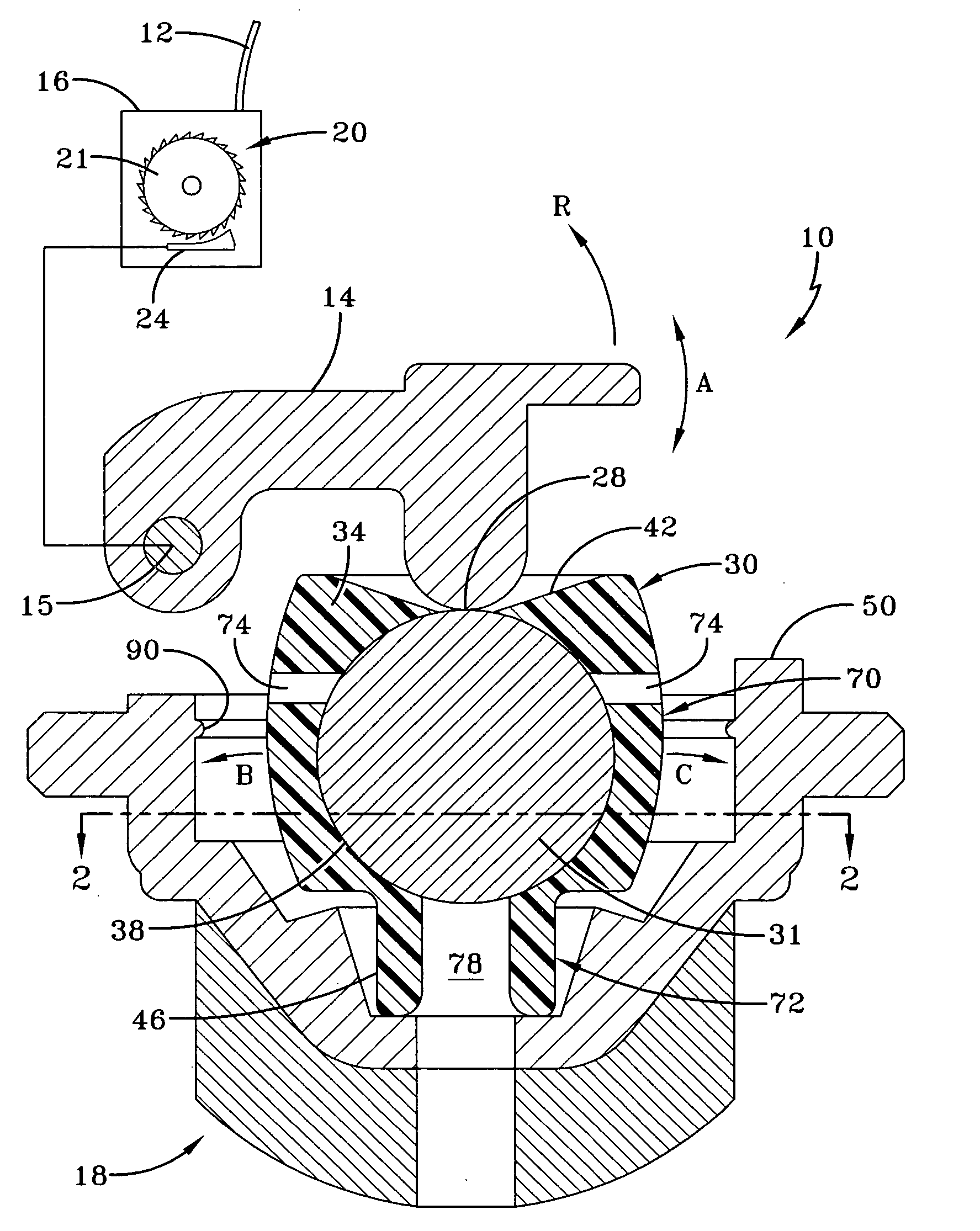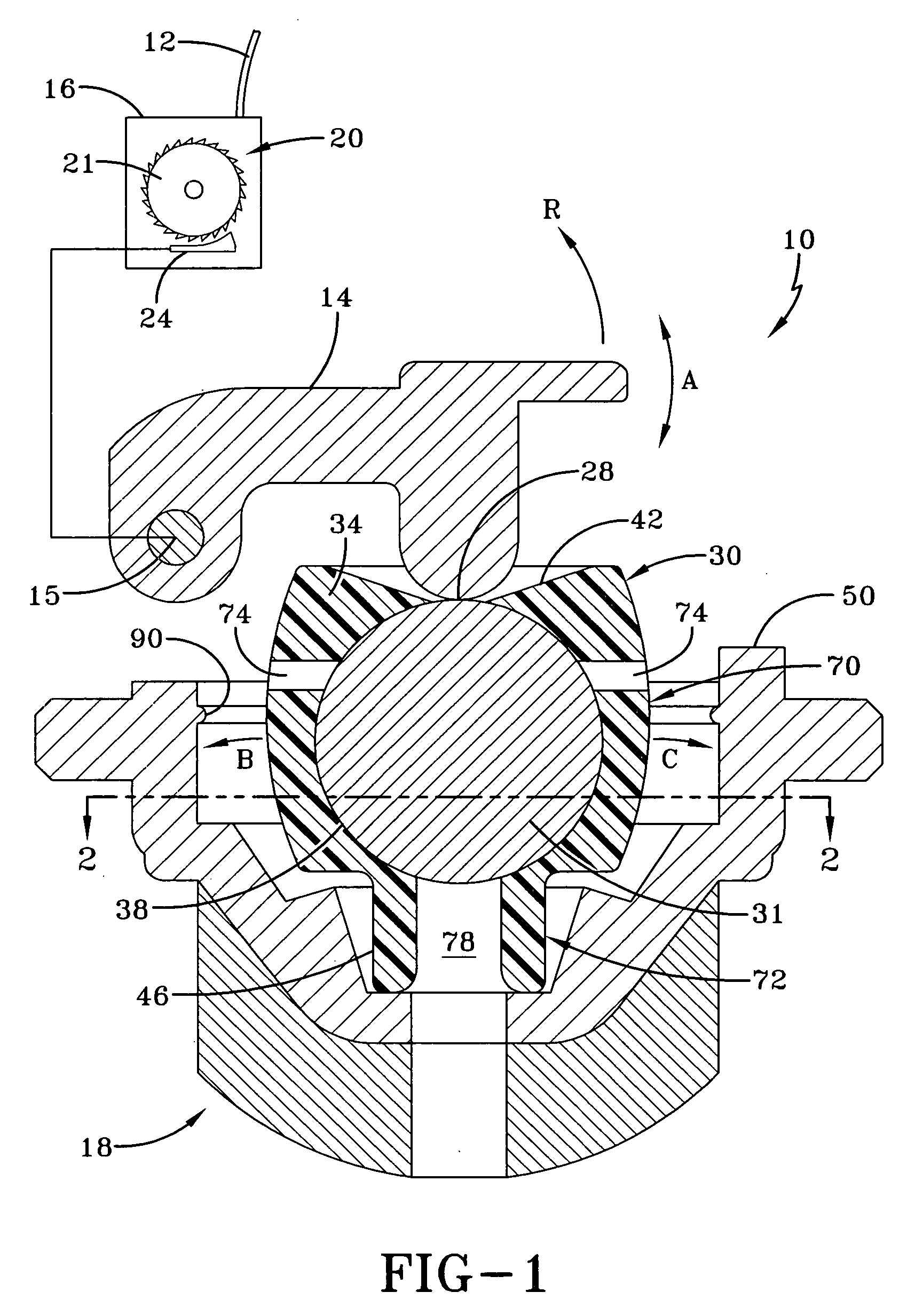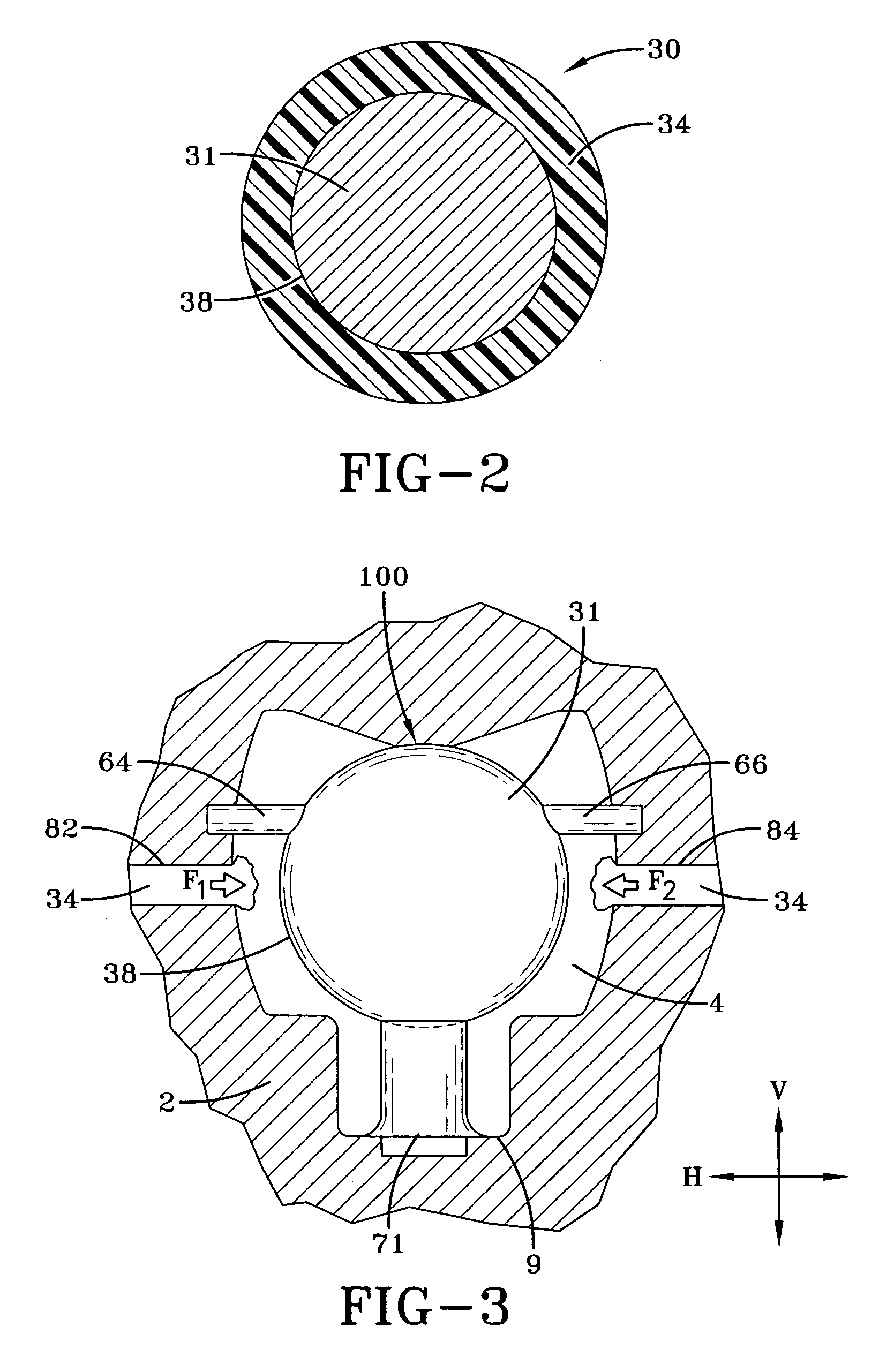Seat belt retractor with overmolded inertia sensor mass
- Summary
- Abstract
- Description
- Claims
- Application Information
AI Technical Summary
Benefits of technology
Problems solved by technology
Method used
Image
Examples
second embodiment
[0030]FIG. 4 is a side view, partially in section, of a seatbelt retractor assembly 10 according to the present invention. Like conventional seatbelt retractors, the seatbelt retractor of the present invention has a seatbelt 12, which is retractable within a seatbelt retractor 10. The seatbelt retractor 10 has a lock 20 which includes an actuator locking pawl 24, which serves to lock and unlock the seatbelt retractor and thereby prevent or allow the seatbelt 12 to extend from a retractor housing frame 16. In addition, the actuator locking pawl 24 is mechanically linked to an actuator arm 14, which serves as a trigger for the actuator locking pawl 24. While the actuator 24 is shown schematically separate from the actuator arm 14, they may form a single piece.
[0031] The actuator arm 14 is pivotable along an arc A. Furthermore, the actuator arm 14 is in contact with an inertial sensor 18 via the top 28 of an inertial sensor mass 26. Inertial sensor mass 26 rests on floor 52 of housing ...
first embodiment
[0033] To further reduce noise and facilitate the manufacture of the first member 54 and second member 58, the inertial sensor mass 26 is preferably made from an elastomeric material 34 with a metal body 31 embedded therein as described in the The metal body 31 provides the appropriate weight to the inertial sensor mass 26 while the elastomeric material 34 serves to cushion vibration and soften contact points. An elastomer with a high density but having sufficient resilience should be used. The elastomer may be ECOMASS™ made by PolyOne, Inc. or THERMOCOMP HSG™ made by LNP Engineering Plastics, Inc. The inertial sensor mass 26 may be cast or molded to create members 54, 58 or alternatively these members can be formed by a cutting operation.
[0034] As shown in FIG. 4, the inertial sensor mass 26 has a wide portion 70 and narrow portion 72. The wide portion 70 has a larger circumference than the narrow portion 72. The first and second members 54, 58 are shown located on the wide portio...
fourth embodiment
[0036]FIG. 7, is a perspective view looking upwards of an inertial sensor mass 29. Like the previous designs, the inertial sensor mass 29 has a narrow portion 70 and a wide portion 72. Unlike the other designs, however, extending from body 31 of the inertial sensor are bristles 65 that extend outwardly from around the body 31 and are generally perpendicular to the surface of the body 31 of the inertial sensor mass 29 as shown in FIG. 7. In this design the individual bristles 65 are surrounded by gaps 62 and protrude outwardly from the inertial sensor mass in a design pattern that insures a first contact of a bristle 65 with the housing. The bristles being spaced and independently movable act like soft springs to deaden the impact or contact noise. The number of bristles contacting the housing depends on the stiffness of the bristles and the rate of acceleration or deceleration.
[0037]FIG. 8 illustrates a fifth version of the inventive inertial sensor mass. An inertial sensor mass 33...
PUM
| Property | Measurement | Unit |
|---|---|---|
| Mass | aaaaa | aaaaa |
| Density | aaaaa | aaaaa |
| Speed | aaaaa | aaaaa |
Abstract
Description
Claims
Application Information
 Login to View More
Login to View More - R&D
- Intellectual Property
- Life Sciences
- Materials
- Tech Scout
- Unparalleled Data Quality
- Higher Quality Content
- 60% Fewer Hallucinations
Browse by: Latest US Patents, China's latest patents, Technical Efficacy Thesaurus, Application Domain, Technology Topic, Popular Technical Reports.
© 2025 PatSnap. All rights reserved.Legal|Privacy policy|Modern Slavery Act Transparency Statement|Sitemap|About US| Contact US: help@patsnap.com



